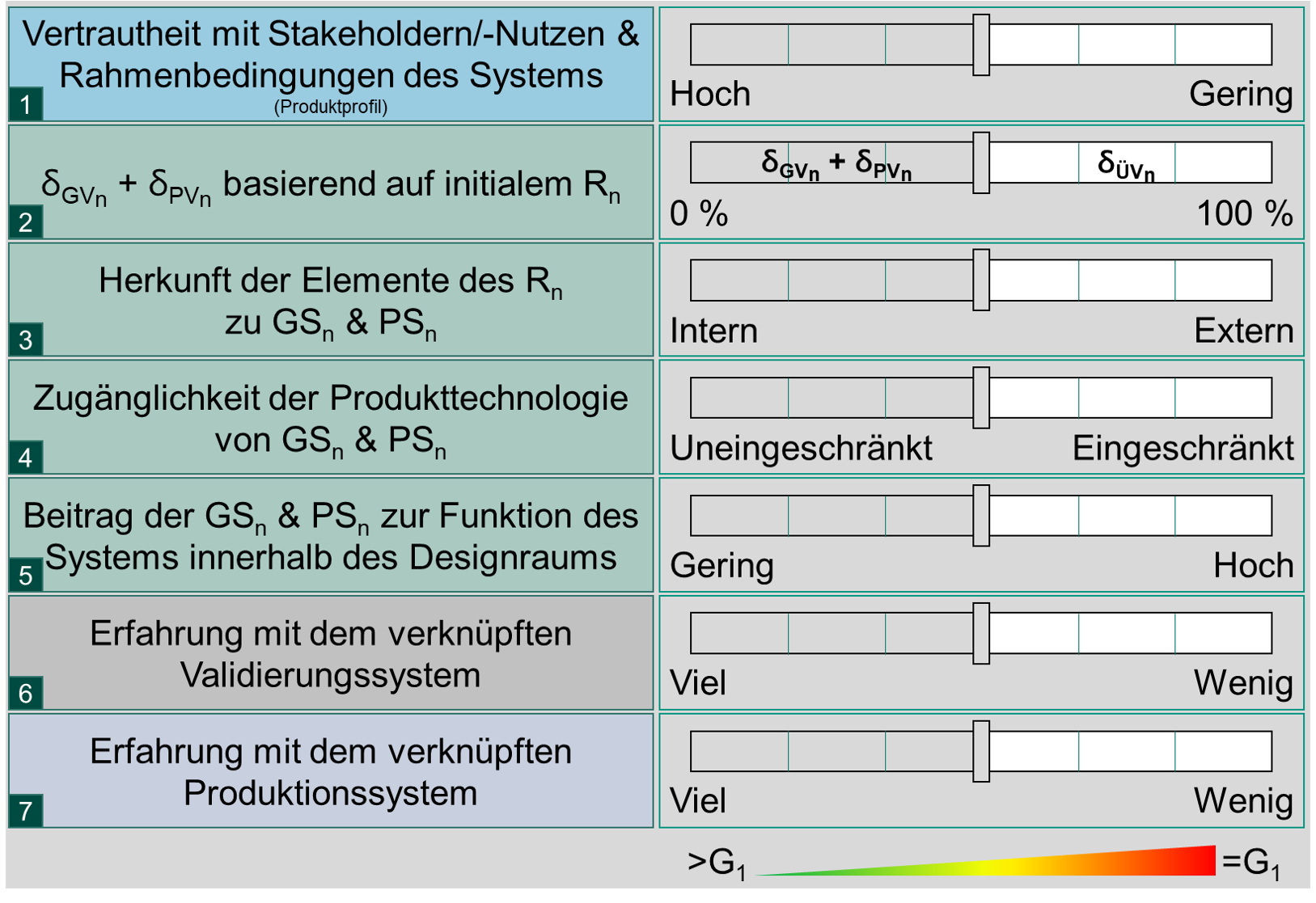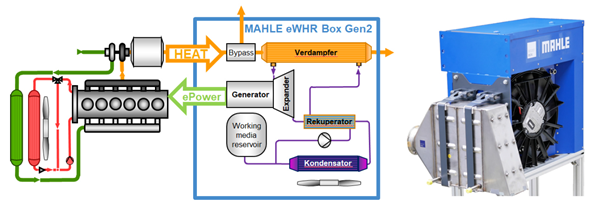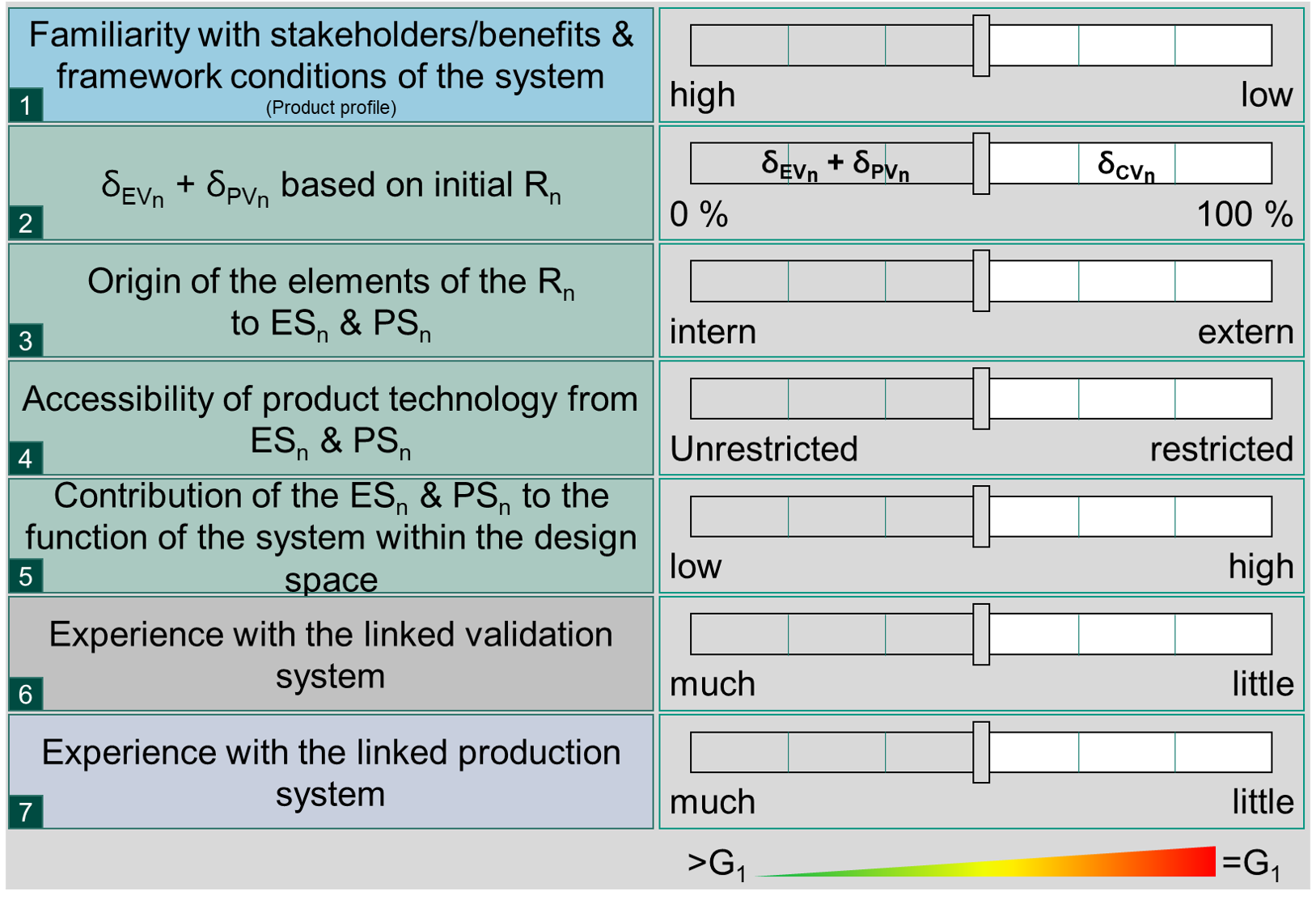Systemgeneration
↵
| Systemgeneration | |
|---|---|
| Verantwortliches Forschungsfeld | Forschungsfeld SGE - Systemgenerationsentwicklung |
| Stadium | Up-to-date |
IPEK-Definition (dt.)
Eine Systemgeneration ist ein sozio-technisches System, das in Abgrenzung zu bestehenden Systemen als Entität eigenständig wahrgenommen wird.
Diese Wahrnehmung ergibt sich aus Differenzierungsmerkmalen bspw. Funktionalität, Leistung, Kosten oder Optische Merkmale (Albers et al. 2017). Häufig ermöglicht auch die Projektbezeichnung oder der Markteinführungstermin eine Abgrenzung oder Identifizierung (Vgl. Albers, Haug et al., 2016, S. 234).
Jede neue Systemgeneration wird auf Basis eines Referenzsystems durch die Aktivitäten Übernahme-, Ausprägungs- und Prinzipvariation entwickelt. Auch Varianten eines Systems sind in diesem Sinne Systemgenerationen. (Albers et al. 2015)
Bezogen auf Produkte werden Systemgenerationen im Sprachgebrauch auch als Produktgenerationen bezeichnet.
Ein Typisches Beispiel von Produktgenerationen stellen Fahrzeuge einer Baureihe dar.
Abbildung eins zeigt ein Beispiel mehrerer Systemgenerationen aus dem Automobilbereich, die eine Produktlinie bilden. Hierbei kann mit dem Modell der PGE die Entwicklung jeder Generation beschrieben werden, insbesondere auch die der Systemgeneration 1.
Nomenklatur-Schema für Systemgenerationen:
(Vgl. Albers, Fahl et al., 2020, S. 7)

Die Entwicklung einer Systemgeneration 1 (G1) ist im allgemeinen ein Entwicklungsvorhaben, bei dem „ein Entwicklungspfad […] völlig neu begonnen [wird und] keine Vorgänger-Generation [als Referenz] vorhanden ist“ (Albers und Yan 2020). Entwicklungen mit G1-Charakter können mittels der Einordnungssystematik nach (Albers et al. 2020a) , anhand der sieben Dimensionen:

identifiziert werden.
Beispiel:

Abb. 2: Waste-Heat-Revorery-System der Mahle International GmbH
Aber auch Entwicklungen wie das Waste-Heat-Recovery-System der Mahle Internation GmbH lassen sich mit dem Modell der PGE beschreiben.
Nachfolgendes Beispiel ist übernommen nach (Albers et al. 2020a):
„Dabei handelt es sich um ein Vorausentwicklungsprojekt einer Abgaswärmerückgewinnungseinheit (engl. Waste-Heat-Recovery(WHR)-System) der MAHLE Internationald GmbH (vgl. Abbildung). In Nutzkraftwagen (NKW) kann durch die Verwendung eines WHRSystems, das Wärme aus dem Abgasstrom in elektrische Energie umwandelt, bis zu 5 % Kraftstoff und damit CO2 eingespart werden. Als Bewertungszeitpunkt wird retroperspektiv der Zeitpunkt vor der Projektübergabe an die seriennahe Entwicklung gewählt. Das dabei beurteilte System unterscheidet sich dementsprechend von dem in Serie entwickelten Produkt.
Zum Zeitpunkt der Entwicklung des WHR-Systems sind ein Großteil der Teilsysteme in ähnlicher Form bereits Bestandteile des Produktportfolios der Entität. Das Referenzsystem beinhaltet damals unter anderem verschiedene Varianten der Flachrohrverdampfer und Stapelscheibenkondensatoren aus Anwendungen im PKW und NKW Bereich. Hinsichtlich der Speisepumpe konnte auf Erfahrungen mit der Kraftstoffpumpenentwicklung zurückgegriffen werden, die ebenfalls auf dem Prinzip der Faltenbalgpumpe beruhen.“
IPEK-Definition (engl.)
A system generation is a socio-technical system that is perceived as an independent entity in distinction to existing systems.
This perception results from differentiating features such as functionality, performance, costs or visual characteristics (Albers et al. 2017). Often, the project name or the market launch date also enables differentiation or identification (Cf. Albers, Haug et al., 2016, p. 234).
Each new system generation is developed on the basis of a reference system through the activities of adoption, expression and principle variation. Variants of a system are also system generations in this sense. (Albers et al. 2015)
Related to products, system generations are also referred to as product generations in linguistic usage.
A typical example of product generations is represented by vehicles of a series.
Figure one shows an example of several system generations from the automotive sector that form a product line. Here, the PGE model can be used to describe the development of each generation, especially that of system generation 1.

Fig. 1: Different product generations of a BMW
Nomenclature scheme for system generations:
(Cf. Albers, Fahl et al., 2020, P. 7):
The development of a system generation 1 (G1) is generally a development project in which "a development path [...] is started completely from scratch [and] no predecessor generation [exists as a reference]" (Albers and Yan 2020). Developments with G1 character can be classified using the classification system according to (Albers et al. 2020a) , based on the seven dimensions:

idendified.
Example:

Fig. 2: Waste-Heat-Revorery-System of Mahle International GmbH
Furthermore, developments such as the waste heat recovery system of Mahle Internation GmbH can also be described using the PGE model.
The following example is taken from (Albers et al. 2020a):
"This is an advance development project of an exhaust gas heat recovery unit (Waste-Heat-Recovery(WHR)-System) of MAHLE Internationald GmbH (cf. Figure). In commercial vehicles, the use of a WHR system that converts heat from the exhaust gas stream into electrical energy can save up to 5% fuel and thus CO2. The point in time chosen for the evaluation is retrospectively the time before the project was handed over to near-series development. The system assessed differs accordingly from the product developed in series.
At the time the WHR system was developed, a large number of the subsystems were already components of the entity's product portfolio in a similar form. At that time, the reference system included, among other things, various versions of flat tube evaporators and stacked disc condensers from applications in the passenger car and commercial vehicle sectors. With regard to the feed pump, it was possible to draw on experience with fuel pump development, which is also based on the principle of the bellows pump."
Andere Definition
Literatur
- Bursac (2016)
- Albers et al. (2017)
- Albers et al. (2015)
- Albers, Haug et al. (2016)
- Peglow, Powelske, Birk, Albers & Bursac (2017)
- Albers, Fahl et al. (2020, S. 7)
- Albers et al. (2020a)
- Albers und Yan (2020)
Literatur URL
- Bursac (2016) https://www.researchgate.net/publication/303824514
- Albers et al. (2017) https://www.researchgate.net/publication/320023869
- Albers et al. (2015) https://www.researchgate.net/publication/279539363_Produktgenerationsentwicklung_-_Bedeutung_und_Herausforderungen_aus_einer_entwicklungsmethodischen_Perspektive
- Albers, Haug et al. (2016) https://www.researchgate.net/publication/315477236_Produktgenerationsentwicklung_-_Praxisbedarf_und_Fallbeispiel_in_der_automobilen_Produktentwicklung
- Peglow, Powelske, Birk, Albers & Bursac (2017) https://www.researchgate.net/publication/322145031_Systematik_zur_Differenzierung_von_Varianten_im_Kontext_der_PGE-Produktgenerationsentwicklung
- Albers, Fahl et al. (2020, S. 7) https://www.sciencedirect.com/science/article/pii/S2212827120308817
- Albers et al. (2020a) https://publikationen.bibliothek.kit.edu/1000127971
- Albers und Yan (2020) https://publikationen.bibliothek.kit.edu/1000126974


